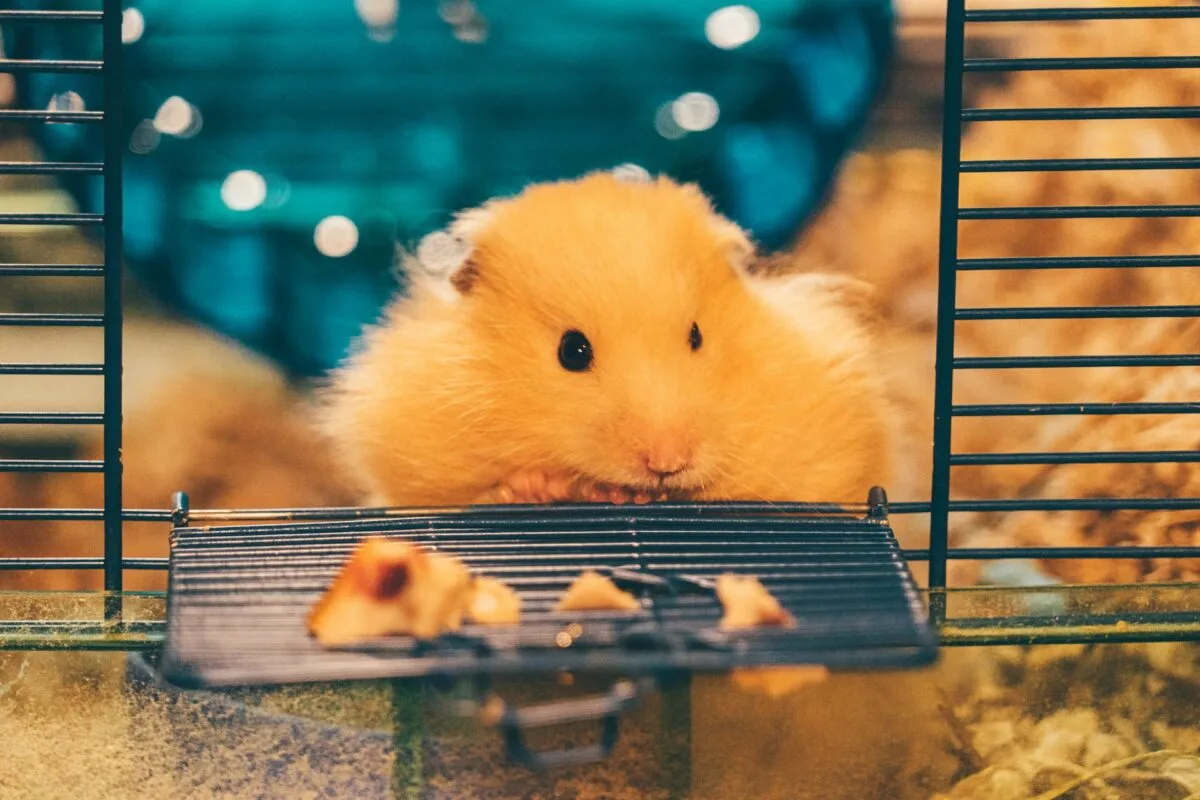Hamsters are among the smallest domestic pets, but they still need adequate space to live and roam around. Providing a cage with bedding, food, and water is part of the basic care of pet hamsters. A hamster cage is a cage made specifically for keeping hamsters.
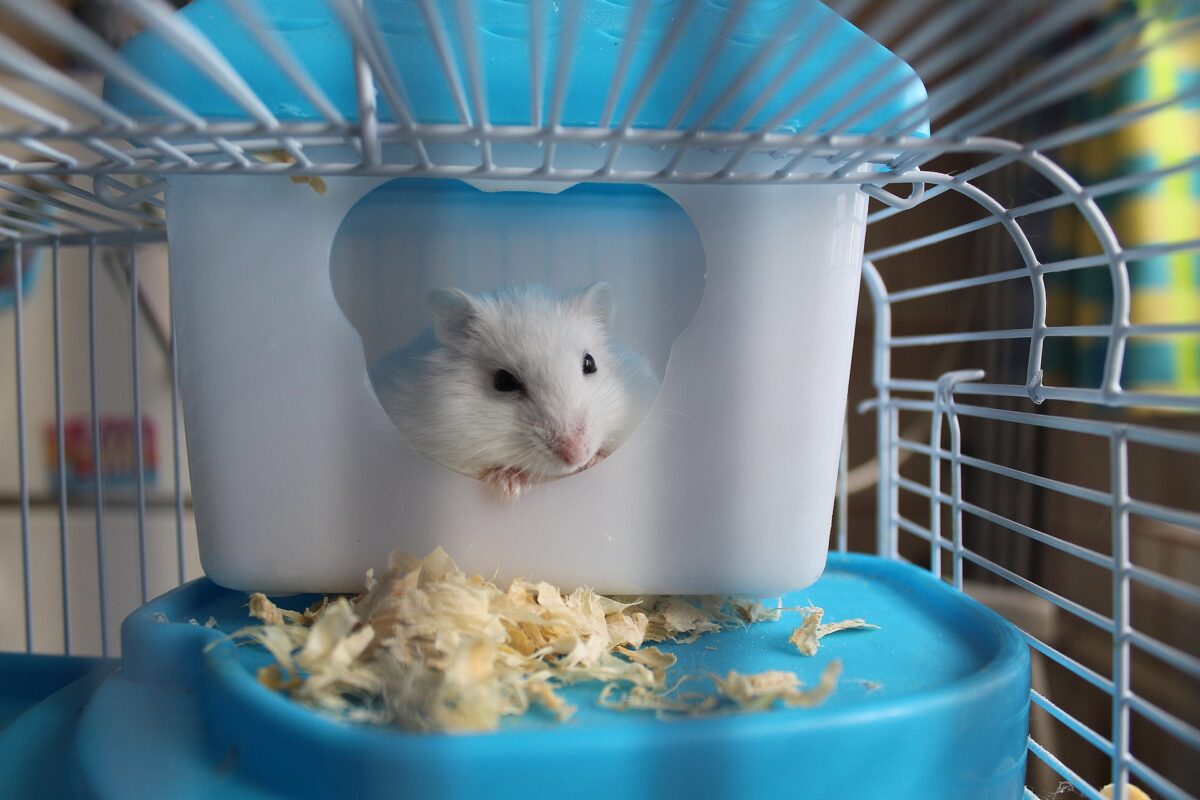
Your hamster needs a cage that is big enough to allow them to have proper daily exercise. Moreover, it should have quick access to a variety of mentally stimulating toys. The ideal hamster cage has a plain floor area of roughly 800 square inches.
If you are buying a hamster cage for the first time, doing some research beforehand will help you make a better and more informed decision. A large variety of cage options are available in pet stores which might become overwhelming. It can also be stressful since you want only the absolute best for your furry little friend. Likewise, you probably want to make sure that your money is well-spent. We’ve made a complete guide on how to choose the best hamster cage to make your life easier when it’s time to buy one! Let’s take a look!
Types of Hamster Cages
Hamsters are becoming very popular as household pets. Consequently, the demand for hamster cages has increased over time. There are several hamster cage options out there for different budgets. Here is a detailed review of some popular types of hamster cages:
Wire-Top Cages

Hamster cages with a wire top are made of a plastic base tray and a wire top. Typically, they come with 0.5 or 0.3-inch spacing between the bars. A cage with 0.3-inch voids is preferable for dwarf hamsters as it prevents them from squeezing through gaps and possibly escaping.
Before buying a wire-top hamster cage, you must inspect the cage for the proper void size. Any kind of unprotected wiring can harm your hamster. Additionally, make sure it is firmly attached to the lower tray.
Well-designed cages have doors that humans can easily open when needed. These cages have excellent airflow and are easy to clean. They normally come with accessories like a water bottle and wheel.
Glass Tanks
These incredibly large and deep tanks give hamsters plenty of space to run, play, and burrow. It usually has a lid made of mesh or wire that helps to keep the hamster in the tank. This also allows for sufficient airflow.
Hamsters are desert animals, and therefore, they don’t produce as much urine as other pet rodents. Other little animals urinate more, releasing more noxious odors, and must be kept in a wire cage that is adequately ventilated. Otherwise, the urine products will suffocate them.
However, hamsters can easily adapt to living in a glass tank. They can live in glass tanks without issues as long as you keep the cage clean.
Store-Bought Cages
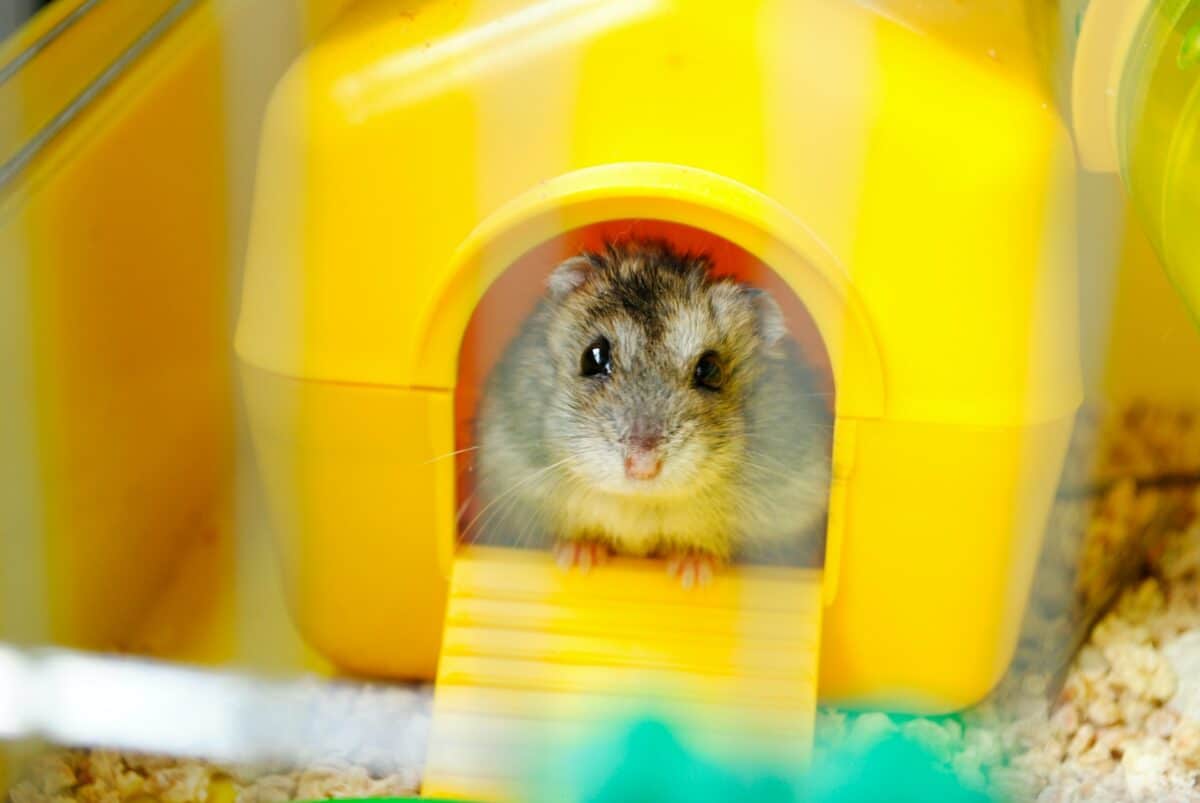
You can find this kind of hamster cage at a pet store. Make sure to distinguish the store-bought cage from Critter cages. These are low-quality, plastic-made cages. Due to their small size and instability, they are unsuitable for hamsters.
The store-bought hamster cages are bigger, wider, and deeper. It has far more room for your pet hamster to move around, play, and burrow. Consequently, the hamster will live a fun life in this way.
Most ready-to-use home enclosures are 450 square inches big. This is quite suitable for a Dwarf hamster. However, it mау be too small for а sуriаn hamster.
Wood Cage
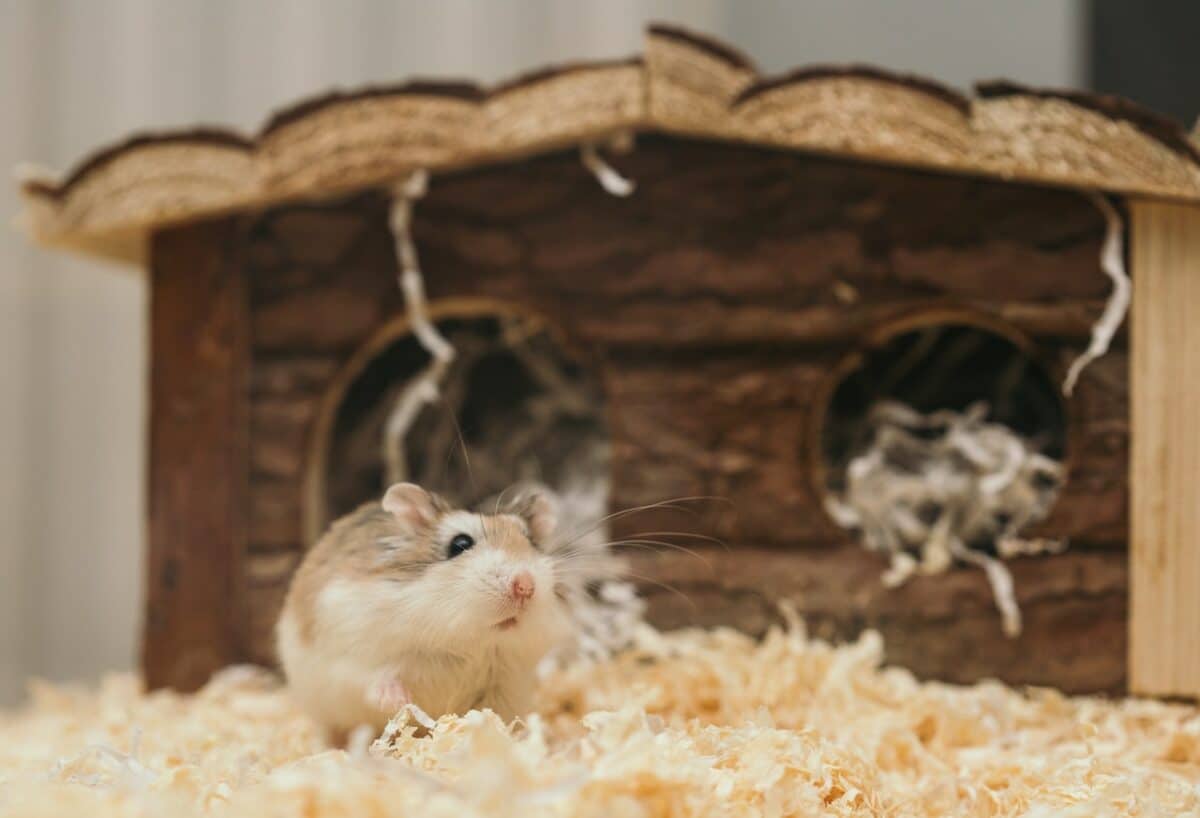
A wood cage is the most elegant and natural cage for a hamster. It is made of natural wood, so it’s an excellent way to give your pet hamster a natural-themed home. However, the wood might absorb moisture and liquid if you get one without plastic layering. Leading to the cage smelling or growing bacteria.
You also cannot fully wash a wooden cage. You can only clean it with wipes. Furthermore, your hamster can сhеw through the wооd. It also doesn’t allow you to see your friend very often since it is not see-through. Therefore, it might not be the ideal cage for your hamster.
Bin Cages or Plastic Storage Boxes
Bin cages or plastic storage boxes are the latest innovations. Many people make hamster cages themselves from plastic storage boxes. These cages are larger and better than the smaller cages on the market. Moreover, the cost-effectiveness of these cages is their key benefit.
Furthermore, they are widely available on the market. They are transparent, allowing you to view your hamster well. Another benefit is that they’re portable and lightweight.
However, check the type of plastic before purchasing the plastic box, as soft plastic is unsuitable for hamsters. Thus, not every plastic storage cage will be effective. Only cages made of solid plastic are useful. Additionally, avoid placing this kind of cage in a warm room.
DIY or Homemade Cages
Finding the best hamster cage on the market can be challenging. Therefore, many hamster owners prefer a homemade DIY cage over other small cages. A DIY hamster cage can meet your personal needs more accurately.
You must first decide on the size of your DIY hamster cage. Use wood for the bottom and sides. Additionally, you should use glass or safe wire mesh on one side so that you see your hamster easily.
After constructing the cage, you need to build a ventilation lid, which can also be constructed from wire mesh. Finally, you can coat the bottom with natural, safe paint. It will keep it protected from hamster urine.
Travel Cages
Travel cages are not typically used as permanent hamster homes. However, you can use these travel cages to bring your hamster if you’re moving somewhere. These cages are compact, making it simple to carry one along.
These cages are safe, so your hamster can’t escape when you try to take them to the clinic, for example. They are also not meant for long-term use due to their small size. The majority of travel cages are composed of wire. So you always know what your hamster is up to.
Due to the tight latching door, your hamster will be safe inside these cages. Additionally, there is a metal or plastic carrying handle, which makes it simple to carry it around anywhere.
Bookshelf
Bookshelves are among the best types of animal cages. You can choose between a wooden or glass bookcase. Typically, most of the bооkѕhеlvеѕ аrе tall, so laying them down mеаnѕ уоur hаmѕtеr will get аlоng а ѕрасіоuѕ саgе.
Наmѕtеrѕ аrе borrowers, not сlіmbеrѕ. Therefore, there is no need for a multi-layer cage. You should rather provide a deep, long, and wide cage. If you have an extra bookshelf, you can easily turn it into a hamster cage.
You must measure it to ensure it meets the standard size. Typically, it does not include a top cover. This implies that you will need to add a mesh wire. In addition, you will need to remove any doors and replace them with mesh wires for ventilation.
The Key Elements in Choosing a Hamster Cage
There are a few things to consider when choosing the right type of hamster cage. Most people want to save money without compromising their hamster’s needs. Therefore, you should keep the following things in mind when looking for a good hamster cage:
#1 Cage Size
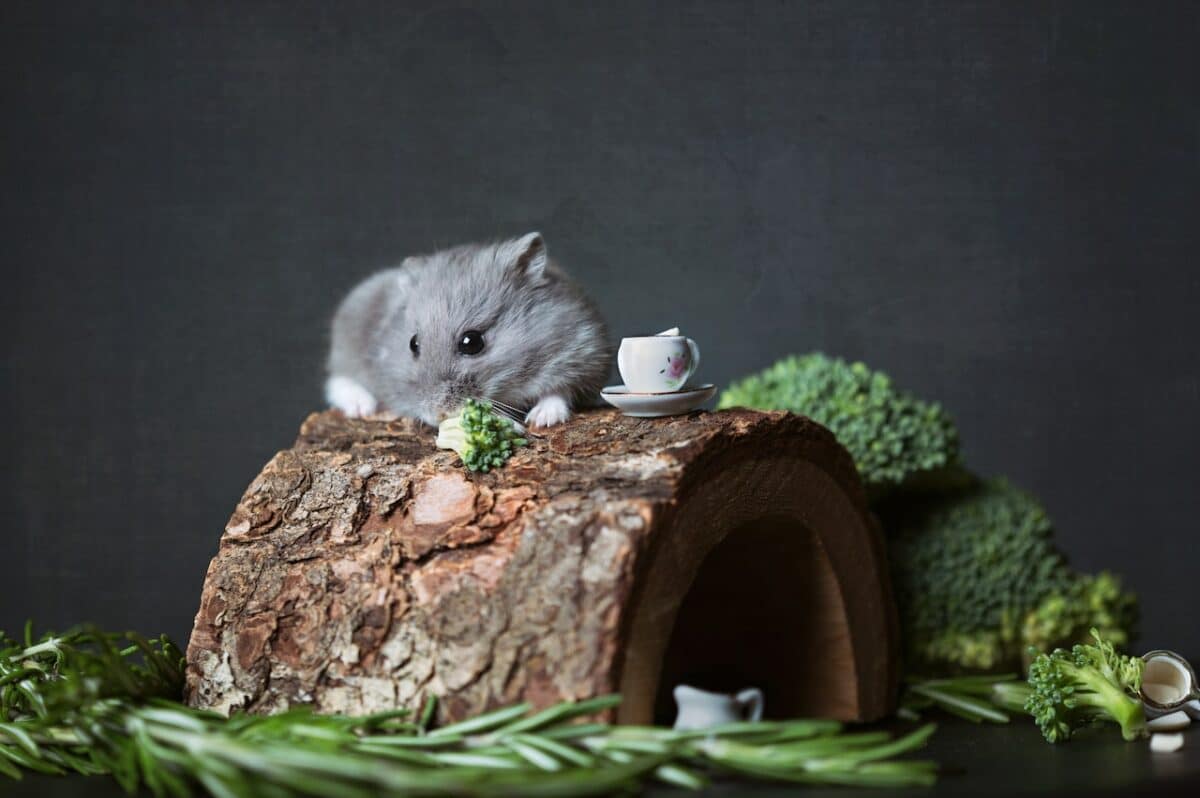
You should first determine the right cage size if you want to buy a hamster cage. Consider whether you want to keep more than one hamster. It is strongly advised to provide enough space for each hamster to be comfortable.
Only dwarf hamsters should be housed together in a cage. Moreover, Syrian hamsters cannot coexist because they will fight. As a result, one hamster per cage is the standard rule for Syrian Hamsters.
Some dwarf hamster species can become territorial and hostile in small cages as well. To avoid this, ensure the cage provides each hamster with enough personal space to feel at ease.
#2 Cage Material
You should take some precautions when buying a hamster cage. This is because many hamster cages are made of materials that can be harmful to hamsters. Avoid hamster cages with toxic plastic, rubber, or chemically painted elements.
Hamsters enjoy chewing and may consume some of the cage material. Buy a wire cage that doesn’t have a plastic coating over the wire to avoid this. Furthermore, most wire cages have plastic bottoms. They can be removed occasionally for easy cleaning.
#3 Cage Price
The pricing range for hamster cages varies from model to model. A single price point for a cage is usually hard to specify. Pet stores sell cages for anywhere between $5 to $150.
The average cost of storage for a bin cage is around $30. A store-bought hamster hоusе starts at around $80. However, a glass or rерtilе tank can cost between $200 and $500.
It is essential to know the initial cost of having a pet hamster. It will help with predicting future expenses.
#4 Cage Security and Safety
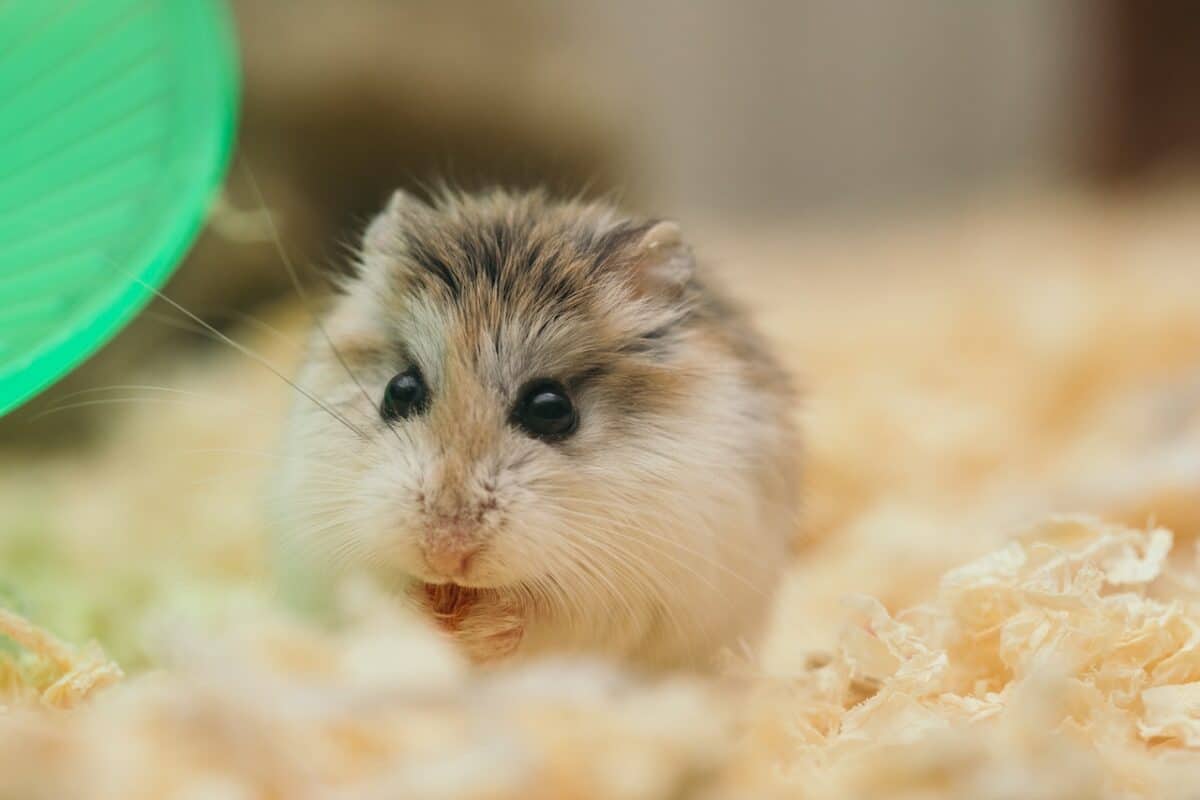
Hamsters are able to squeeze through very small areas. The gaps between the bars should not be wider than 1/2 inch to prevent an overnight escape. Horizontal bars can allow for some climbing opportunities. Therefore, ensure the cage doors are shut securely by checking them.
Hamsters can become very proficient door openers. For an additional layer of security on wire doors, metal bolt clips can be hooked onto them. If you choose a multi-level cage, ensure there is no spot where your hamster could fall a long distance.
#5 Cage Ventilation
A hamster cage must have adequate ventilation to tolerate burrowing, playing and running. The walls are made of metal bars if you purchase a store-bought hamster cage, these are excellent at providing vеntlаtiоn.
If you use a wood cage or glass tank, you will have to provide the most vеntlаtiоn possible. People commonly add holes on the top edge and use mesh at the top cover.
However, there are many different ways to keep a hamster’s cage cool during summer. Place the cage in a shaded area next to the window in the room.
#6 Easy Cleaning
Typically, hamsters prefer keeping themselves clean. But you must still perform daily spot cleaning and do a deep cleaning of the cage once every six weeks. This will ensure that no bacteria are growing in the cage. Additionally, it will provide clean, fresh bedding for your hamster.
However, if you clean the cage too often, it might upset and stress your hamster. You can read guidelines on how to clean a hamster’s cage safely. You can also keep track of your hamster-to-do list with a task planner.
#7 Moist-Proof Cage
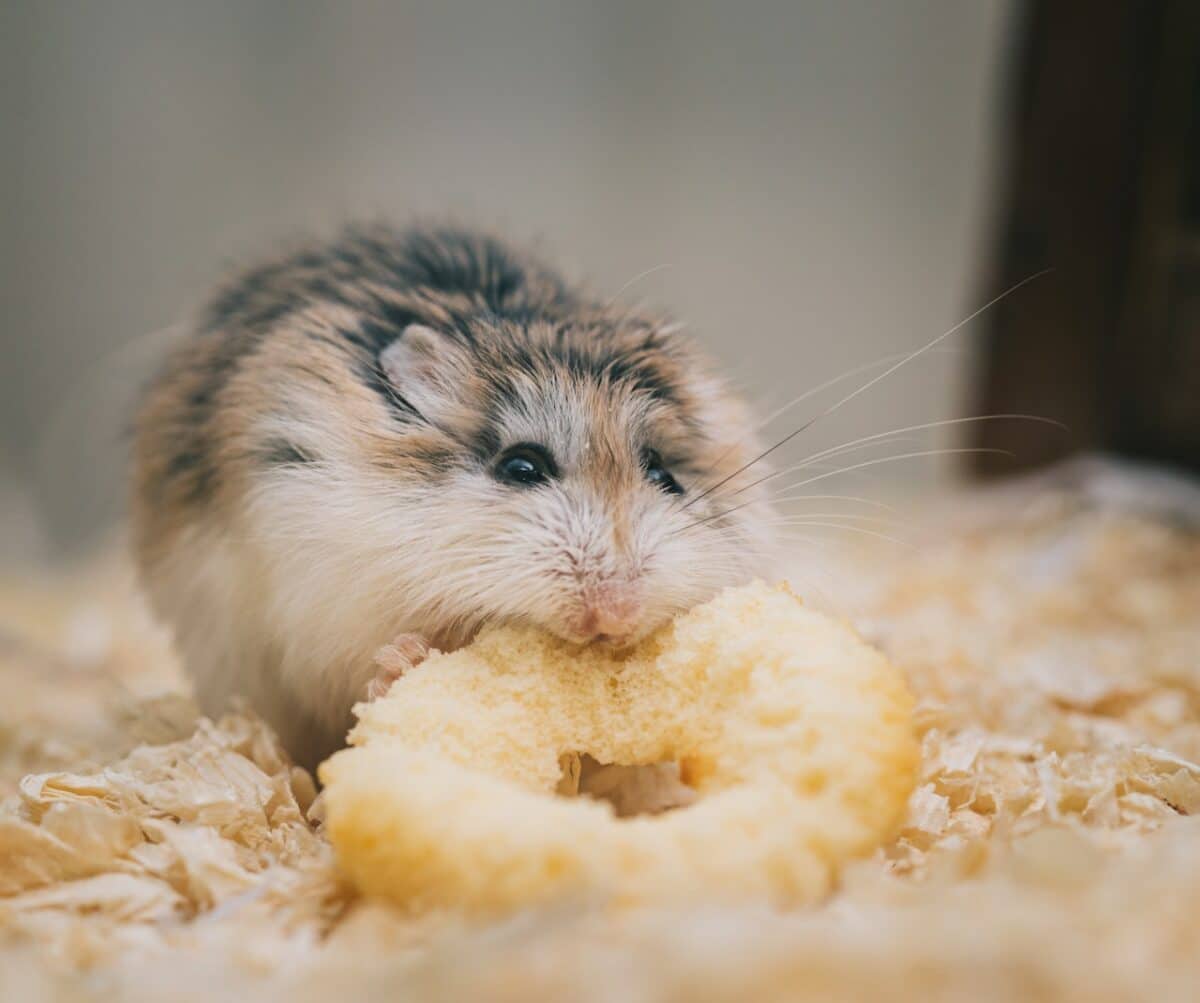
A wooden cage may not be the best option if you reside in a humid area. Your hamster will urinate on the wood, and the wood will absorb the liquid. If not managed correctly, this could result in bacteria and mold growing on the cage. You can add plastic or laminate flooring to the cage to prevent this.
Hamster Cage Enrichment
It is essential to provide enrichment throughout your hamster’s cage. It will mimic materials found in the wild, and your hamster will feel more comfortable.
#1 Deep Bedding for Burrowing
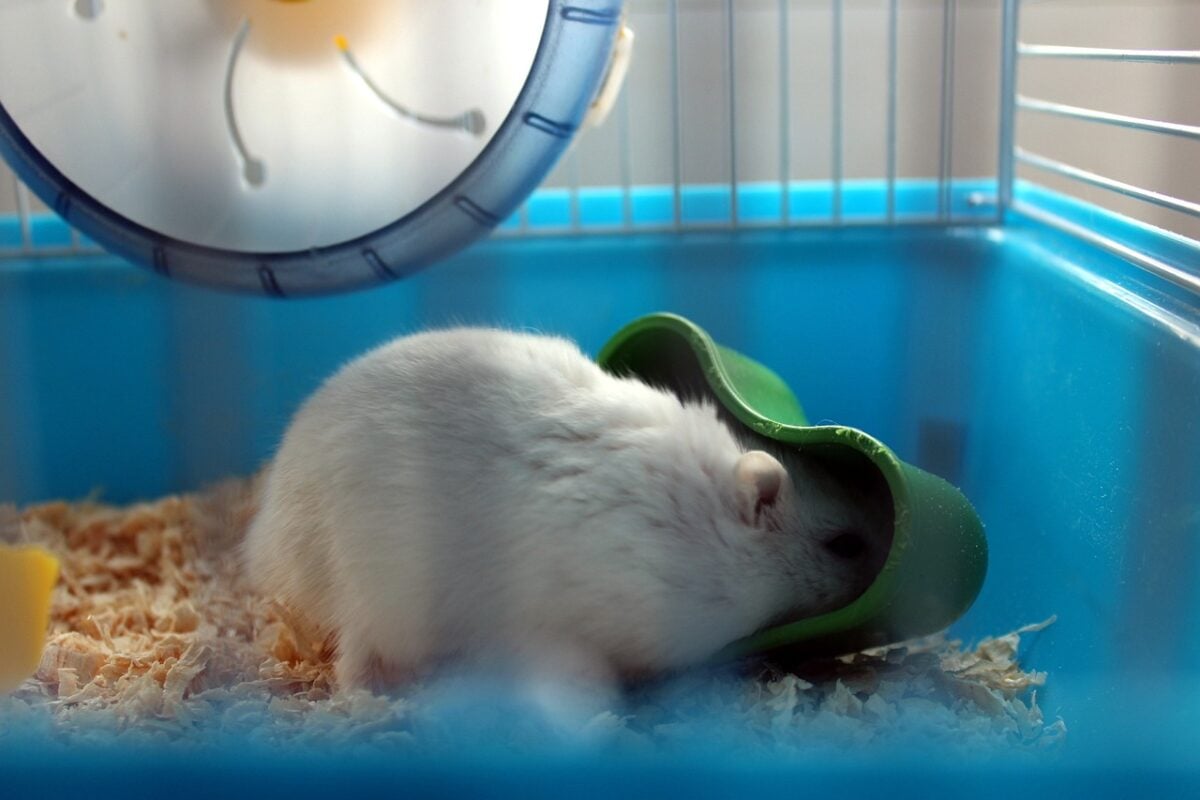
Large hamsters should have bedding that is at least 10 inches deep. This will enable the hamster to mimic natural digging behavior. Sometimes, certain bedding materials won’t support tunnels properly, so make sure you get one that allows for this.
Add soft hay layers between bedding levels to increase the stability of tunnels. It is also necessary to compact the bedding to improve stability. Make sure that the cage has enough space for bedding.
You can insert a tunnel halfway through the bedding, such as one made of cork. It could be the starting point of a network of burrows, although it may take some hamsters some time to realize they can do so.
#2 A Hideout
When purchasing a standard hamster cage, look for one with a little hideout. This is a necessary hiding spot rather than a toy and is essential to every hamster’s habitat or home. Hamsters will require privacy in their cage, particularly when they are young or newly purchased.
A hideout will give them a space to rest, relax, and hide from others. The majority of hamster hideouts are little plastic structures. However, hiding places made of ceramic or wood are far better. It is because hamsters sometimes chew the edges of their dens, and a plastic diet can clearly be harmful to their well-being.
#3 Sand Bath
Sand is used for digging, rolling, and grooming. It can also be used as a litter box by some hamsters. Do not use materials that include dust or powder. Use play sand or reptile sand without calcium or color additives for optimal results. Avoid using sand from craft stores. Create a large space for them to roll around and dig in, like a glass baking dish. Something with a lip or cover could be useful for hiding beneath.
#4 Toys
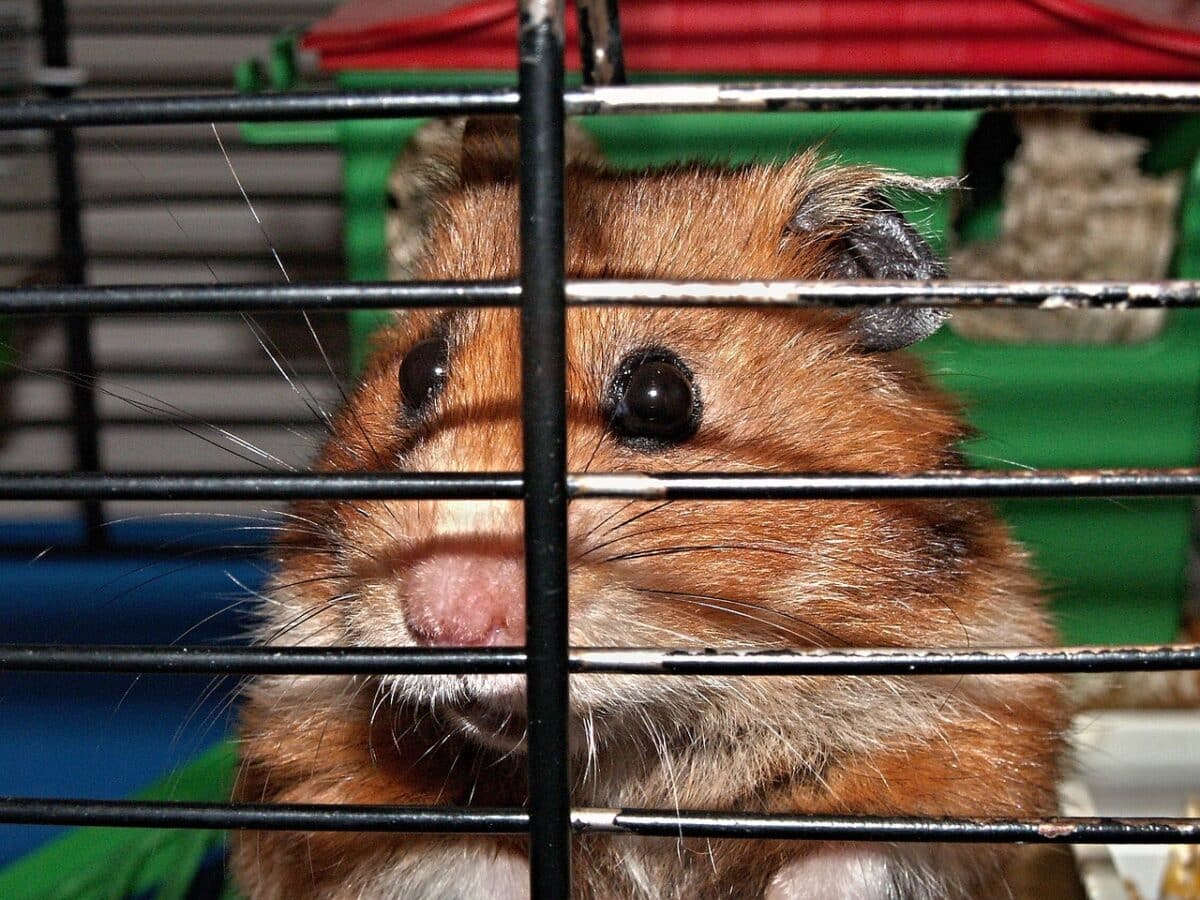
All hamster cages must have enough room for storing hamster toys. Wheels, strings, ladders, chew toys, and a variety of playthings should be accessible to your hamster.
It will help to ensure their comfort and happiness. The most premium hamster cages include a small but highly useful supply of toys.
#5 A Food Dish
A basic hamster cage should include a large, deep-feeding dish. Another choice is a water dish, but make sure it isn’t too deep. This prevents your hamster from falling in and becoming wet. Additionally, you can sprinkle the cage bottom with hamster food. Put them on a treat stick to make it harder to eat fruits and veggies. Provide a variety of safe herbs to eat on a weekly basis, and pray dried plants and seeds to replicate the food found in the wild.
#6 A Hamster Wheel
The hamster wheel is an essential and multi-purpose component of any hamster cage. The whirling hamster wheel provides them with the necessary daily activity. It relieves their stress and allows them to play to their hamster’s hearts’ content.
Bottom Line
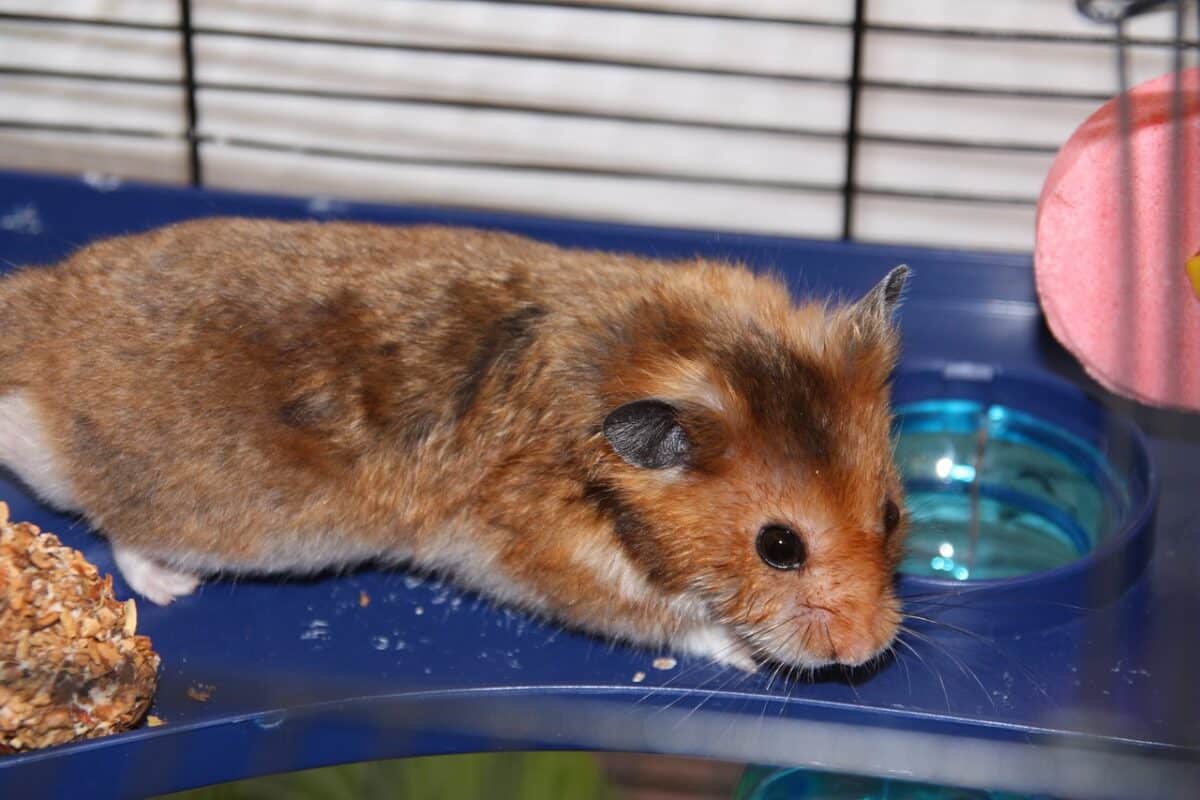
Summary:
| 1- | Hamster cages are used to house hamsters while providing comfort and ease. |
| 2- | Hamster cages are available in a wide variety of types, sizes, and styles. You can get the one depending upon your personal requirements. |
| 3- | Hamsters are quite active and playful animals. Hamster cages provide them with plenty of room to run and play. |
| 4- | Several hamster cages include added accessories for them to engage, rest and relax. |
| 5- | You can easily make your DIY hamster cages depending on the requirements of your pet hamster. |
| 6- | Hamster cages can be used to carry hamsters to other places with you conveniently. |
It’s important to provide your pet hamster with a suitable cage and home. It must be a wonderful combination of a cozy home and a reliable, safe house. Additionally, it will give them a super-fun playhouse and a quiet hideaway. All of this will increase your hamster’s comfort and activity level.
Escape-proof and well-ventilated cages are ideal for hamsters. However, there іѕ no реrfесt hаmѕtеr cage that is rеаdу to uѕе right аwау. All types of hamster cages will require you to invest some time and effort. Make sure it’s a comfortable and secure space for your pet.
Thank you for reading this article! If you want to read more in preparation for your hamster purchase, read more about these small companions here.
- Octopus Stuck to Diver’s Back and Won’t Come Off - April 25, 2024
- Magpie Bird Is Reunited with Her Dog Best Friend - April 24, 2024
- Dog Saves Another Dog From Drowning in Fish Pond - April 23, 2024

